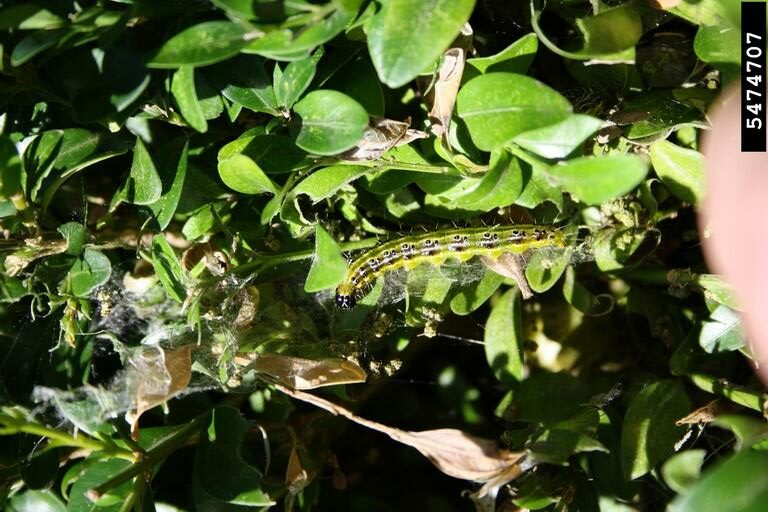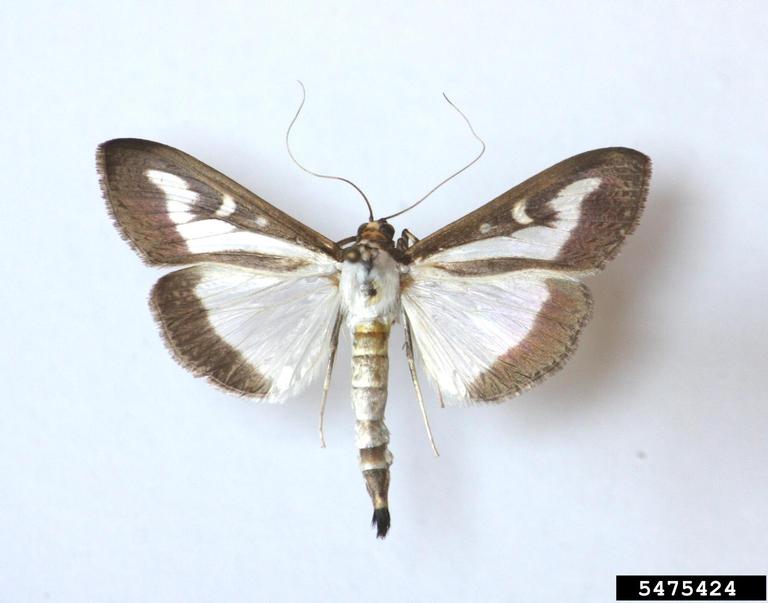Urgent New Pest Alert: Box Tree Moth Found in the US
go.ncsu.edu/readext?801333
en Español / em Português
El inglés es el idioma de control de esta página. En la medida en que haya algún conflicto entre la traducción al inglés y la traducción, el inglés prevalece.
Al hacer clic en el enlace de traducción se activa un servicio de traducción gratuito para convertir la página al español. Al igual que con cualquier traducción por Internet, la conversión no es sensible al contexto y puede que no traduzca el texto en su significado original. NC State Extension no garantiza la exactitud del texto traducido. Por favor, tenga en cuenta que algunas aplicaciones y/o servicios pueden no funcionar como se espera cuando se traducen.
Português
Inglês é o idioma de controle desta página. Na medida que haja algum conflito entre o texto original em Inglês e a tradução, o Inglês prevalece.
Ao clicar no link de tradução, um serviço gratuito de tradução será ativado para converter a página para o Português. Como em qualquer tradução pela internet, a conversão não é sensivel ao contexto e pode não ocorrer a tradução para o significado orginal. O serviço de Extensão da Carolina do Norte (NC State Extension) não garante a exatidão do texto traduzido. Por favor, observe que algumas funções ou serviços podem não funcionar como esperado após a tradução.
English
English is the controlling language of this page. To the extent there is any conflict between the English text and the translation, English controls.
Clicking on the translation link activates a free translation service to convert the page to Spanish. As with any Internet translation, the conversion is not context-sensitive and may not translate the text to its original meaning. NC State Extension does not guarantee the accuracy of the translated text. Please note that some applications and/or services may not function as expected when translated.
Collapse ▲Box tree moth, Cydalima perspectalis, is native to Asia. It was introduced into Europe in 2007 and quickly spread across the continent. Box tree moth was introduced to Ontario, Canada in 2018 which was the first introduction to North America.
In May 2021, plants were shipped to Connecticut, Massachusetts, Michigan, New York, Ohio, Tennessee, and South Carolina from an infested nursery in Ontario. Nurseries or retail outlets that received boxwoods (Buxus spp.), Euonymus, or hollies (Illex) from Canada should scout for eggs, larvae, pupae, and adults.

Box tree moth larva and webbing. Ferenc Lakatos, University of Sopron, Bugwood
USDA APHIS is taking steps to trace the plants and determine if any were infested and begin eradication protocols or take other measures if necessary. Importation of boxwood, holly, euonymus, and other hosts from Canada have been halted by federal order.

White morph box tree moth adults. Szabolcs Sáfián, University of West Hungary, Bugwood
Box tree moths are up to 4 cm and have two color morphs. The morph seen in Canada has white wings with brown borders. The brown morph also found in Europe is almost entirely dark brown with characteristic white specks on the forewings. Males can be monitored with pheromone traps. Caterpillars are up to 2 cm and yellow to lime green with dark stripes. They eat boxwood leaves and bark and can quickly defoliate and even kill large hedges. Caterpillars also create unsightly webbing and frass within plants which protects them from predators and could reduce insecticide efficacy.

Damage from box tree moth larvae. Ferenc Lakatos, University of Sopron, Bugwood
Public garden personnel, landscape and nursery professionals, extension personnel, diagnosticians, and the public need to be aware of this new pest and look for it. A scouting guide is available to help identify box tree moth life stages. Box tree moth pheromone lures and traps are commercially available. It would be valuable to monitor with these for early detection.
There have not been experiments to document insecticide efficacy for this pest in the US. In Europe and Canada, many insecticides are not permitted for use on ornamental plants. A fact sheet is available listing insecticides labeled for caterpillars in nursery and landscape ornamentals.



